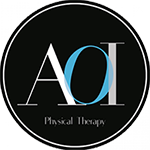Dry needling
Dry Needling is a procedure in which thin, solid needle filaments are inserted into the painful areas of muscles or tissues of the body. The needles penetrate through the skin into the sensitive myofascial trigger points (irritable hard knots within the muscle) and stimulate the underlying injured muscles to relieve pain. These fine needles deactivate the sensitive trigger points thereby decreasing pain and restoring the normal muscle functions. These needles do not inject any medication into the body.
Indications
Dry needling is generally indicated to relieve acute and chronic pain by promoting muscle healing after an injury. The procedure can be used to treat various Orthopedic conditions, injuries and sports-related muscular pain. Some of them include:
- Muscle strains
- Neck and back pain
- Shoulder, hip and knee pain
- Tennis or golfers elbow (elbow pain from overuse)
- Tendinitis (Inflamed tendons)
- Headaches
- Sciatica (pain extending down the sciatica nerve in the leg)
Procedure
Your physical therapist may feel for areas of muscular pain (trigger points) in the tissues. The needle is inserted into the skin at this point and a local twitch response is felt. You may also experience mild pain or tingling sensation at the site of needle insertion. The twitch response will stimulate pathways to promote healing of the painful muscles.
Generally, dry needling therapy yields positive results within 2 to 4 sessions. The results may depend on the underlying cause of injury, period of related symptoms, and health status of the individual.
Side-effects
Dry needling is a safe technique with very few mild side-effects. You may experience mild skin bruising and muscle soreness at the site of needle insertion.














